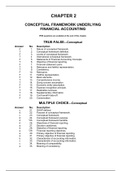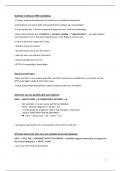Antwoorden
Test Bank Chapter 2 Conceptual Framework Underlying Financial Accounting.
- Vak
- Instelling
CONCEPTUAL FRAMEWORK UNDERLYING FINANCIAL ACCOUNTING IFRS questions are available at the end of this chapter. TRUE-FALSE—Conceptual Answer No. Description F 1. Nature of conceptual framework. T 2. Conceptual framework definition. F 3. Levels of conceptual framework. T 4 International concep...
[Meer zien]




